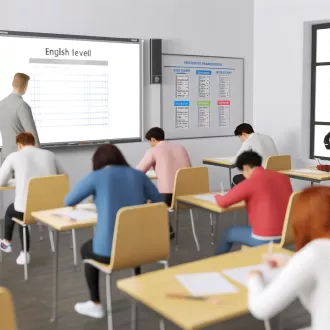Colocación de los adverbios en el futuro perfecto continuo
Adverbios en el Futuro Perfecto Continuo
Los adverbios en el Futuro Perfecto Continuo generalmente se colocan entre el verbo modal [will] y el verbo auxiliar [have], o entre el verbo [to be] y la partícula [going to].
En las oraciones interrogativas, el adverbio se coloca entre el sujeto y el verbo auxiliar [have], o entre el sujeto y la partícula [going to], ya que en preguntas se invierte el orden del sujeto y el verbo auxiliar.
El adverbio [yet] (aún, todavía) es una excepción y se coloca al final de la oración.
Ejemplos de adverbios en el Futuro Perfecto Continuo:
- Siempre voy a haber estado creyendo en ti → I’m always going to have been believing in you.
- ¿Él solo habrá estado enfocándose en su carrera? → Will he only have been focusing on his career?
- Ellas nunca habrán estado llevándose bien → They will never have been getting along.
- ¿Alguna vez vas a haber estado prestando atención? → Are you ever going to have been paying attention?
- No habré estado arrepintiéndome de esto aún → I won’t have been regretting this yet.
- ¿Justo habrán estado espiándome? → Will they just have been spying on me?
- Todavía voy a haber estado dándome un baño → I am still going to have been taking a shower.
- Finalmente me habré estado yendo a dormir → I will finally have been going to sleep.
Ubicación de los adverbios en el Futuro Perfecto Continuo
La mayoría de los adverbios se colocan entre [will] y [have] o entre [to be] y [going to], excepto [yet], que va al final.
| Adverbio | Significado | Ubicación en la oración | Ejemplo |
|---|---|---|---|
| Always | Siempre | Entre [will] y [have] o [to be] y [going to] | She will always have been studying. |
| Only | Sólo | Entre [will] y [have] o [to be] y [going to] | They will only have been waiting. |
| Never | Nunca | Entre [will] y [have] o [to be] y [going to] | I will never have been traveling al |
futuro perfecto continuo colocacion adverbios






